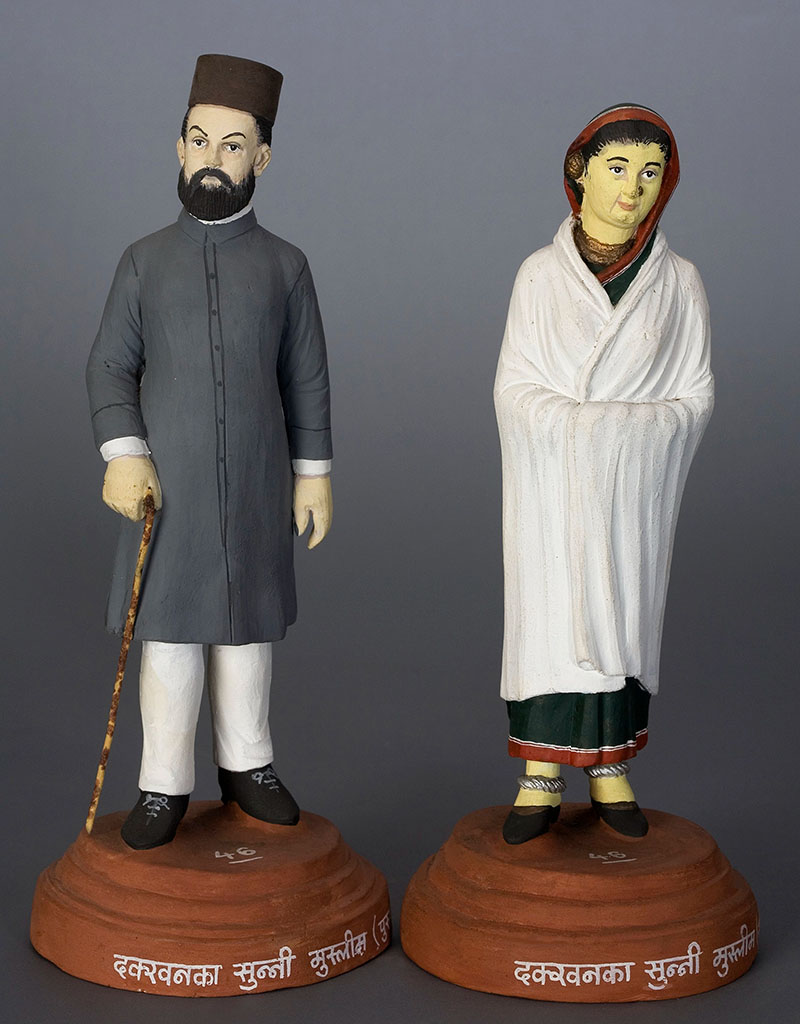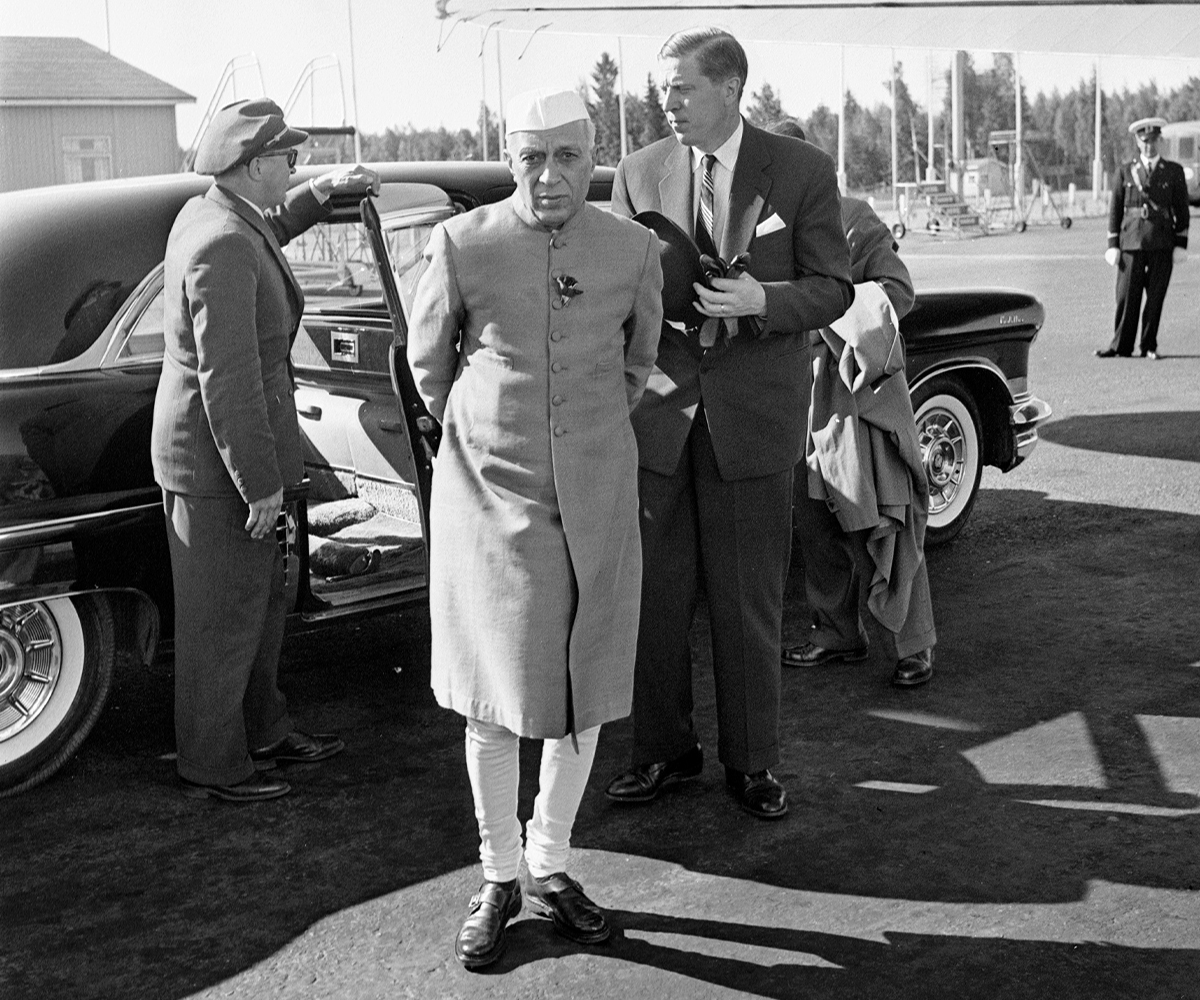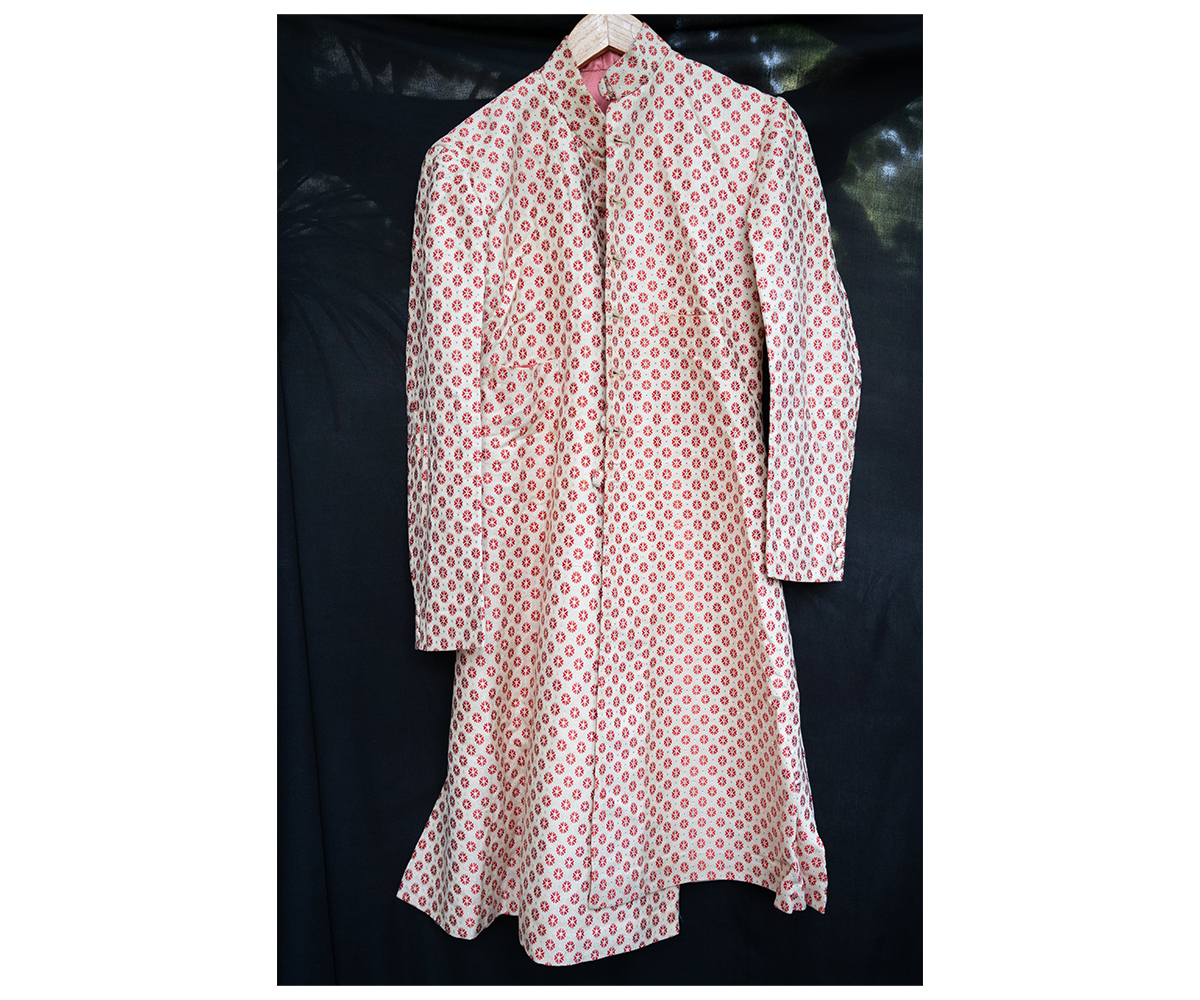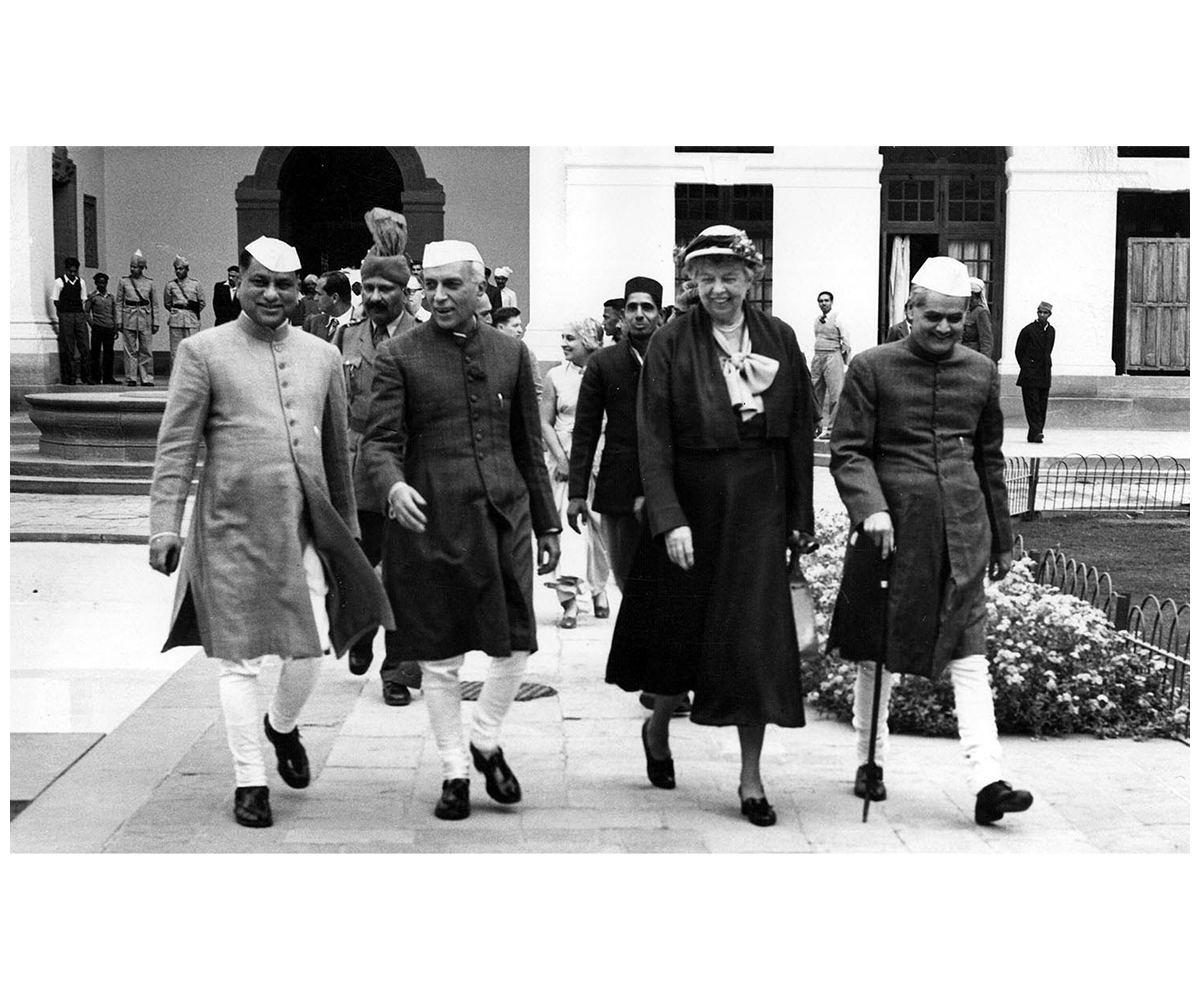An evolution of the angarkha and the chapkan, the achkan is a knee-length upper garment with long sleeves, side slits and a standing collar that originated in the middle of the 19th century. It is significant for being the first Indian garment for men to prominently feature buttons and buttonholes.
According to some scholars, the invention of the achkan can be credited to the court of Oudh in Lucknow. It is likely to have evolved as a result of the European stitching popularised in the royal courts by British officers, resulting in a garment which was a hybrid of the angarkha and the European coat. The achkan is similar to an angarkha, with a waist seam, cloth panels and an extension called the balabar, which fits under the right hand side of the skirt of the garment and holds it in place. However, unlike the angarkha, its bodice is front-open and fastened over the torso using buttons.
Another garment closely linked and often confused with the achkan is the sherwani. However, the achkan is different from the sherwani in several aspects. As compared to the sherwani, it varies in length, has no lining and features a waist seam as well as gussets at the sleeves. Furthermore, the achkan was popular in the northern states as compared to the sherwani, which was more prevalent in South India, where the Mughal influence still lingered. Both the achkan and the sherwani have been credited with inspiring the Nehru jacket.










